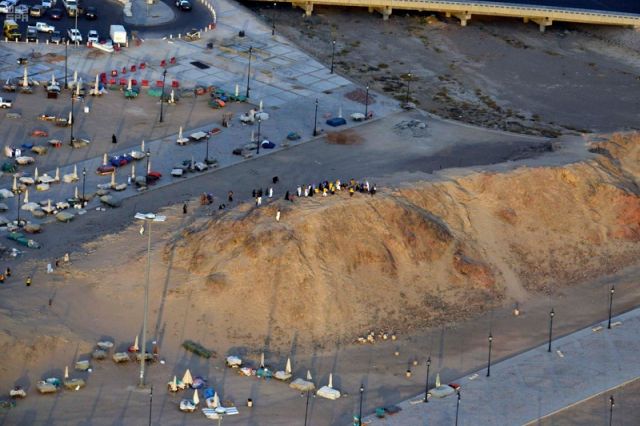 Jeddah : Mount Uhud is a mountain overlooking Madinah from the north. It is seven kilometers long, two to three kilometers wide and about 350 meters high. The mountain is nearly five kilometers away from the Prophet’s Mosque in Madinah.
Jeddah : Mount Uhud is a mountain overlooking Madinah from the north. It is seven kilometers long, two to three kilometers wide and about 350 meters high. The mountain is nearly five kilometers away from the Prophet’s Mosque in Madinah.
Uhud boasts Madinah’s largest mountain and great prophecies of Prophet Muhammad (peace be upon him) who walked at the foot of the Mount along with his companions (may Allah be pleased with them)
The mountain witnessed the Battle of Uhud which took place during the third year of Hijrah. It was a decisive battle at the beginning of the spread of Islam and the Hijrah (migration) of Prophet Muhammad (pbuh) from Makkah to Madinah.
The Messenger of Allah (pbuh) said: “Verily, the Mountain of Uhud loves us and we love it, it is upon the Gate of Heaven” (Sahih al-Bukhari).
The mountain plain contains the graves of the Prophet’s 70 companions (may Allah be pleased with them), who martyred during the Battle of Uhud. Consequently, Mount Uhud and its plains are considered as one of the landmarks in the Biography of Prophet Muhammad (pbuh) and Islamic history.
The rocky nature of the mountain is dominated by a red dye as well as dark green and black dyes. Geologically, Mount Uhud is formed from red granite and has many peaks, multiple plateaus and marshes which are natural holes on the mountain that store water flowing from the top.
The naturally formed Cave of Uhud, on the side of Mount Uhud facing the Prophet’s Mosque, is the place where Prophet Muhammad (pbuh) took refuge after being wounded during the Battle of Uhud. The cave is 100 meters away from the mosque where reported the Prophet performed Dhuhr and Asr prayers, and it is one kilometer away from Mount Rumah.
Mount Rumah is a small mountain in the north of Mount Uhud. It is where Prophet Muhammad had positioned archers during the Battle of Uhud with the strict instructions not to move.
There are several opinions why the mountain is called Uhud. Some say it is called Uhud because it is separated from other mountains around. It is also said that the mountain is named Uhud because the Prophet and his companions fought beside it in support of Tawheed (monotheism). It is written that Mount Uhud was called “Anqad” during the pre-Islamic era. It is also reported that the mountain is named after a giant man called Uhud, who had lived in the area.
Some Islamic history books suggested that the Giants were the oldest people to inhabit Yathrib (thereafter called Medina). They were the first to plant, dig and build ramparts in Madinah. They were the descendants of the sons of Arphaxad, son of Sam, son of Noah (peace be upon him).
—AB/IINA





0 Comments